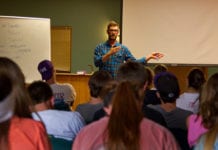By Joel Comiskey
One of the most controversial words in the cell church dictionary is multiplication. Some embrace it while others resist it. This month on the JCG blog, we’ve been exploring cell multiplication and trying to discover its meaning. During this last week of November, we want to explore the hindrances to cell multiplication. I have a cell lesson on this theme entitled, “Cell Multiplication: Hindrances and Helps.” I invite you to download this PowerPoint. Here’s the gist of it:
Hindrance: multiplication mandates (e.g., “all cells must multiply in nine months”). The bottom line is that cells don’t multiply in a uniform set time period.
Help: understand the soil and context. The multiplication time period depends on the receptivity of the country and context (last week’s blog).
Hindrance: the mentality that multiplication equals “the numbers game.” Many cell members and leaders don’t want to hear about multiplication because they think the pastor is simply wanting church growth when talking about multiplication.
Help: promote multiplication as a health factor. The reality is that groups that don’t multiply tend to stagnate and become unhealthy. Cell multiplication equals cell health.
Hindrance: lack of equipping focus. Many churches never multiply groups because they don’t have a way to prepare new leaders to faciltate the new groups.
Help: emphasis on leadership training (disciples who make disciples). A clear emphasis on leadership training is the most important element in multiplication.
Hindrance: lack of vision and direction.Some churches don’t give any direction or forward momentum to their groups.
Help: promote the vision of cell ministry and plan multiplication based on who and where a person is in the equipping process. The best way to set goals in the cell church is to determine who will graduate from the training track and then to set multiplication goals accordingly.
Hindrance: too little focus on the nucleus. Leaders can easily feel burned out by the lone-ranger mentality. .
Help: remind people that the nucleus–not the cell–multiplies. Biologically, the nucleus, not the cell divides. Effective cells concentrate on the health of the cell nucleus (team) who in turn will give birth to a new group. Buy Michael Mack’s book, Burnout Free Small Group Leadership. I love Mack’s emphasis on establishing a core of three people.
Hindrance: one person leading more than one cells. This is a big problem in majority world countries when trying to reach “the goal.”
Help: the essence of cell ministry is making disciples who make disciples. Cell minsitry is a leadership strategy and the cell is the best atmosphere to produce disciple-makers. The primary goal, therefore, is more leaders rather than more cells.
Hindrance: lack of variety in multiplication. In the olden days, cells had to use mother-daughter multiplication.
Help: provide different options for multiplication. Other multiplication options include cell planting and the leader starting his or her own group.
Hindrance: no evangelism in the cell. It’s hard to multiply a cell without new people coming to the group.
Help: stir each member to reach out. everyone in the cell needs to be reaching out in preparation for multiplication.
Hindrance: equating evangelism with cell multiplication. Some think that cell evangelism equals cell multiplication.
Help: multiplication entails a number of other disciplines. Multiplication embraces a number of other disciplines (e.g., group dyanmics, pastoring, raising up a disciple, etc.).
Feel free to download the entire PowerPoint.
Comments?
Joel










